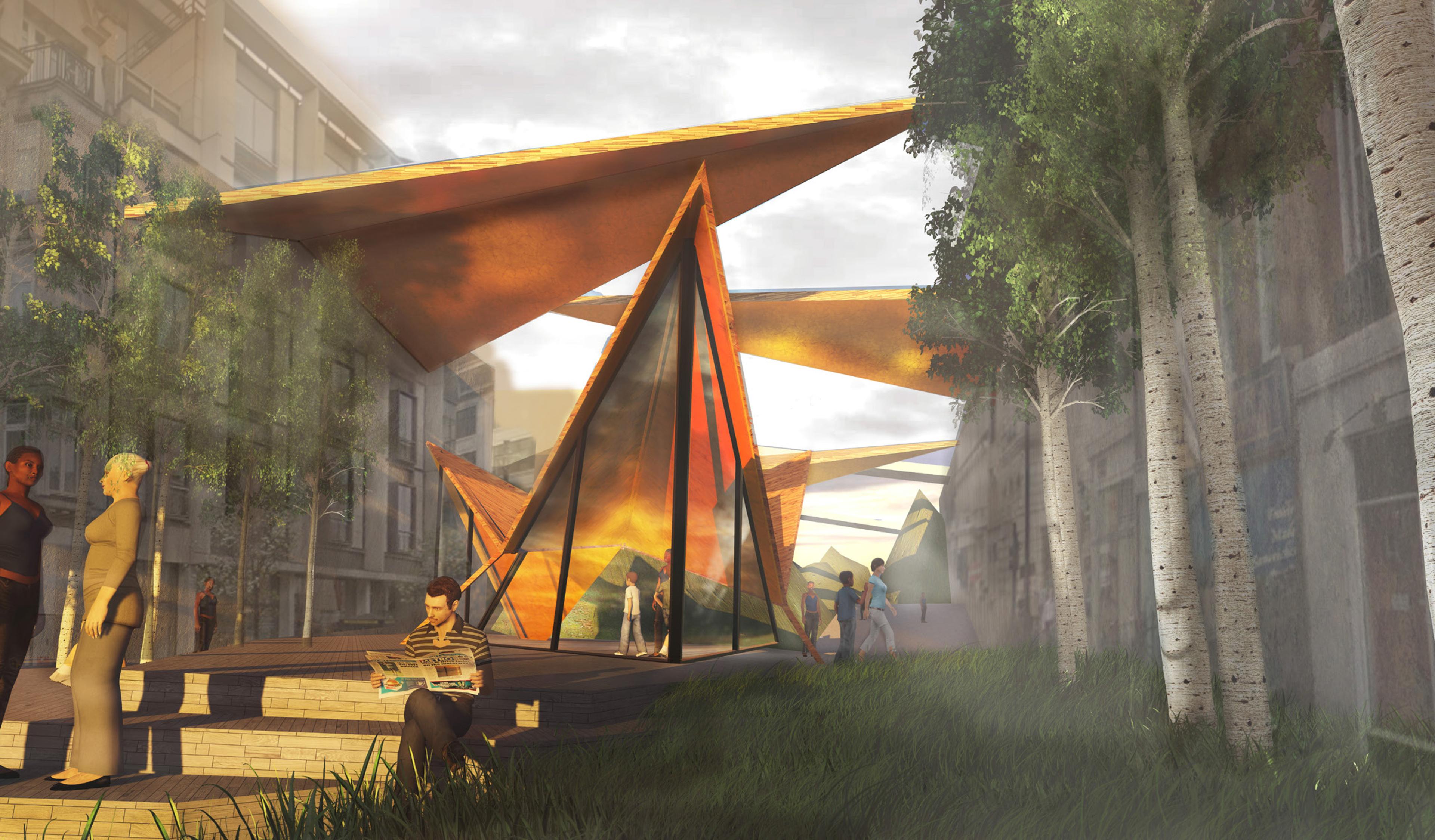Care
University of Portsmouth
Anna Berkman, Adrian Papworth, Eniola Sonusi
Who in our society needs the most attention and essential care?What do these people look like? Where do they sleep? What do they need?
By the year 2030, technology will have advanced and the wage gap increased, with both population growth and the average life expectancy continuing to rise. How can we turn these would-be problems into positive solutions?
A vital city should look after its residents. With a growing and ageing population, we are going to need new and innovative ways to care for the sick, needy and elderly in our cities. The increasing rise in automation means unemployment is set to grow, so the social safety net will become more important than ever. A vital city should promote healthy lifestyles and be able to provide the medical care that its inhabitants require.
We’ve created a multi-functional platform to bring communities together and turn our differences into strengths that can be shared and used to help one another. Members in an urban society can easily become disconnected and isolated, and some of those members get left behind altogether. Using technology and the cityscape around us, we’ve developed an architectural design and a technology-driven strategy for connecting different social groups together. We’ve designed community hubs and pavilion spaces around our site as meeting spaces for people to exchange their time, skills and services in a symbiotic relationship that benefits all.
Our new cityscape has an improved topography and use of green space. By utilising extra road space and turning it into green corridors, we have managed to create a peaceful headspace in a bustling city like London. This space is for all – a space for homeless to sleep and connect with others, a place for the elderly to sit and talk, an area for exercise and entertainment, and a space for local farming and organic sharing. All will contribute to a mentally and physically healthier society.

